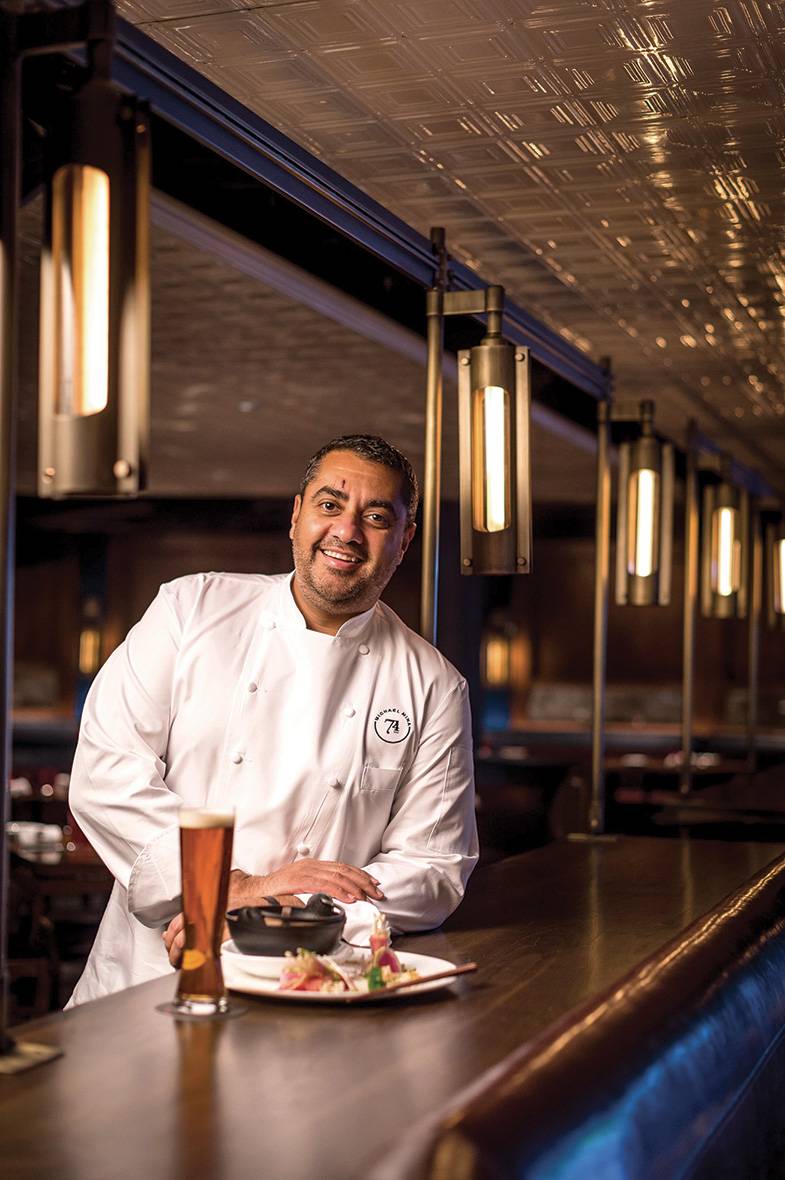Famed West Coast restaurateur Michael Mina has a funky new American bistro called Michael Mina 74. His second Miami restaurant is a long ways away from his San Francisco base. His Fontainebleau venue turns up the fun, and the music which gradually gets louder as the night goes on. With innovative, sharable dishes like Roasted Suckling Pig Cubano Style, Crispy Fish Tacos and Kale & Artichoke Caesar Salad, Michael Mina 74 is attracting foodies and night crawlers in equal measure.
HL : What is it like to have Andre Agassi as a partner?
MM: It started out as a financial partnership because he wasn’t really in the restaurant business. But I could not have gotten any luckier. He’s a great partner, and the President of Agassi Enterprises, Steve Miller, who was with Nike for 10 years, has helped us a lot.
HL: How is this menu like your others?
MM: About 30% of the items are dishes people know us for, so that you walk in and kind of know it’s a Michael Mina restaurant. But there are also a lot of new things. This is a big menu.
HL: You’re known for your creativity in the kitchen. Where do you get your inspiration from?
MM: Travel. Especially for this restaurant. I travel to a lot of warm weather places like Japan, Thailand, Italy, and Spain so I brought a lot of that. I [also] like the surprises and layering food in a way that is unexpected but simple -like the duck spring roll we have on the menu.
HL: This restaurant is a little more late night than your usual.
MM: Yes, it is. Our full menu stops at 12, but there are 20 dishes on the late menu that goes ‘til 3a.m!
HL: How do you find a chef that can live up to your name?
MM: It’s not just about finding people with the ability to do things I can, I’m only picking people that also have abilities I do not. I need people that have even more skill sets. Thomas Greife (Executive Chef for Michael Mina 74), he’s worked for Thomas Keller. He can cook!
HL: What is the most important thing in the kitchen?
MM: Relentlessness. Never ever being satisfied. [Thinking that] it’s never good enough. If you look at the perfect Japanese restaurant where the menu never changes and everyday is about how to make it a little bit better.
HL: How have your origins influenced your cooking?
MM: I grew up in rural Washington, the big thing we grew was Timothy hay, which is actually imported to Japan for Kobe beef. There are a lot of fun plates with hay, like our hay-smoked beef tenderloin.





















